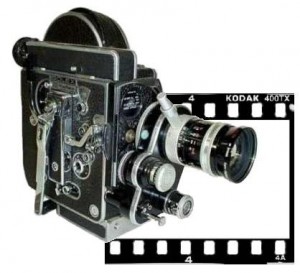 This is the second part of the series on intellectual property. All quoted references can be found in the book “The Law of Journalism and Mass Communication” Third Edition, 2012, by Robert Trager, Joseph Russomanno and Susan Dente Ross.
This is the second part of the series on intellectual property. All quoted references can be found in the book “The Law of Journalism and Mass Communication” Third Edition, 2012, by Robert Trager, Joseph Russomanno and Susan Dente Ross.
Solopreneur Sophia has learned her lesson about copyright protection, and she is now moving on with the business of Sophia’s Soaps and selling her homemade spa products. When starting her business, Sophia had an original logo created to help establish her brand identity. It consisted of a soap bubble with an intertwined S inside. Happy with the creative design, Sophia has been using this logo on all her products and promotional materials.
While monitoring the chatter online one day about her business, she runs across a website using her logo. Sam’s Shavers is a company selling specialty razors for sensitive skin. The business’ website promotes a different product line than Sophia’s Soaps, but as the products fall within the same bath market and the logo is identical, Sophia is concerned that customers may confuse the two businesses. She immediately begins researching what she can do to rectify this situation. Her research leads her to trademark rights.
What is a trademark?
A trademark is “a word, name, symbol or design used to identify a company’s goods and distinguish them from similar products other companies make” (p. 618). Under trademark, a company’s product’s size, shape, color, texture and graphics, all the characteristics that make up the total look of the product, are also protected.
How is a trademark protected?
Trademarks are protected under the Lanham Act of the U.S. Constitution, which “ensures that if a company complies with certain requirements, no other company may use a word, symbol, slogan or other such item that will confuse consumers about who supplies a particular product or service” (p. 618).
For a trademark to be protected, though, it must be distinct. Sophia can trademark her logo, but she can’t trademark the word “soaps.” There are four categories of distinction in trademarks:
1. Fanciful marks are the most protected due to the fact they are invented marks and made-up words. Aubia falls into this category.
2. Arbitrary marks receive the next most protection. These marks are “words that have ordinary meanings but not meanings applied to a product or service” (p. 620). The Puma brand is an example. Puma is a type of animal, but in the case of the brand, it’s a trademark for athletic wear.
3. Suggestive marks receive some protection, but they are not distinct enough to stand on their own. These marks “hint at a product’s qualities but do not describe what the product is,” (p. 620) leaving it up to the consumer to figure out. Coppertone sun products has been found by courts to be a suggestive mark.
4. Descriptive marks have the least amount of protection as they describe the product or service. Clothing brands cannot trademark “stylish” as many fashion products are described this way. It is only when such words gain a secondary meaning that they become top-of-mind to consumers when thinking about that product they can be trademarked. For example, the terms “nausea, heart burn, indigestion, upset stomach and diarrhea” together could have been trademarked by Proctor & Gamble as it related to its Pepto-Bismol product’s marketing.
How do I register for a trademark?
Trademarks do not have to be registered to be protected by common law in the courts. It is understood that the first person or company to use the mark owns the trademark. To have statutory protection under the Lanham Act, however, trademarks must be registered with the U.S. Patent and Trademark Office. The proper forms, a drawing of the mark and appropriate fees must be submitted to the USPTO to register the mark on either the Principal Register, which “gives all legal rights to a distinctive mark being used in commerce” (p. 622), or the Supplement Register if the mark is descriptive and waiting on secondary meaning to be established.
Another use of registration is establishing when the mark was first used. In Sophia’s case, whoever used the logo first and can establish the prior use will have the benefit.
How long is a trademark protected?
A trademark owner is required to file an affidavit in the sixth year after registration to confirm the mark has been in active and continued use. Since 1989, registered trademarks have a 10-year term with indefinite registration renewals.
How do I bring suit for trademark infringement?
“Trademark infringement occurs when there is a likelihood of confusion” (p. 624). Trademark law was founded to first protect consumers and to second protect a company’s economic resources. Therefore, courts use various means to decide if a trademark has the potential to confuse consumers. Courts will explore “marks’ similarities, the similarities of products or services for which the marks are used, how consumers purchase the goods (impulse buying or careful consideration), how well known the first-used mark is, actual confusion that can be proved, and how long both marks have been used without confusion” (p. 625) to determine if infringement has taken place. Trademark infringement can also include dilution, using a “famous trademark in a way that disparages the mark or diminishes its effectiveness” (p. 625).
When suit is brought forth for infringement, the court can order the violator to stop using the trademark either temporarily while the investigation is underway to prove infringement or permanently if infringement is proven. A court may also order monetary damages to be paid if the plaintiff proves consumer confusion.
What if I’m accused of trademark infringement?
There are defenses to trademark infringement under the Lanham Act, which most are based on disputed facts. Examples include who used the mark first or the trademark has been abandoned or genercided, “when the public begins using the mark to mean a category of goods rather than a particular manufacturer’s product” (p. 621). . The strongest defenses, though, come in the form of fair use. If a trademark is not distorted and used in comparative advertising, parody, commentary or news reporting, then infringement has not occurred.
How do I avoid committing trademark infringement?
As in copyright, doing your homework pays off in protecting yourself from inadvertently committing trademark infringement. Conducting a trademark search is your first line of defense. Remember the more creative your mark, the better chance its original and the more protection it enjoys.
A thoughtful trademark helps establish your brand identity and distinguishes your business in the industry. What are some iconic trademarks in your market?
photo credit: opensourceway via photopin cc



